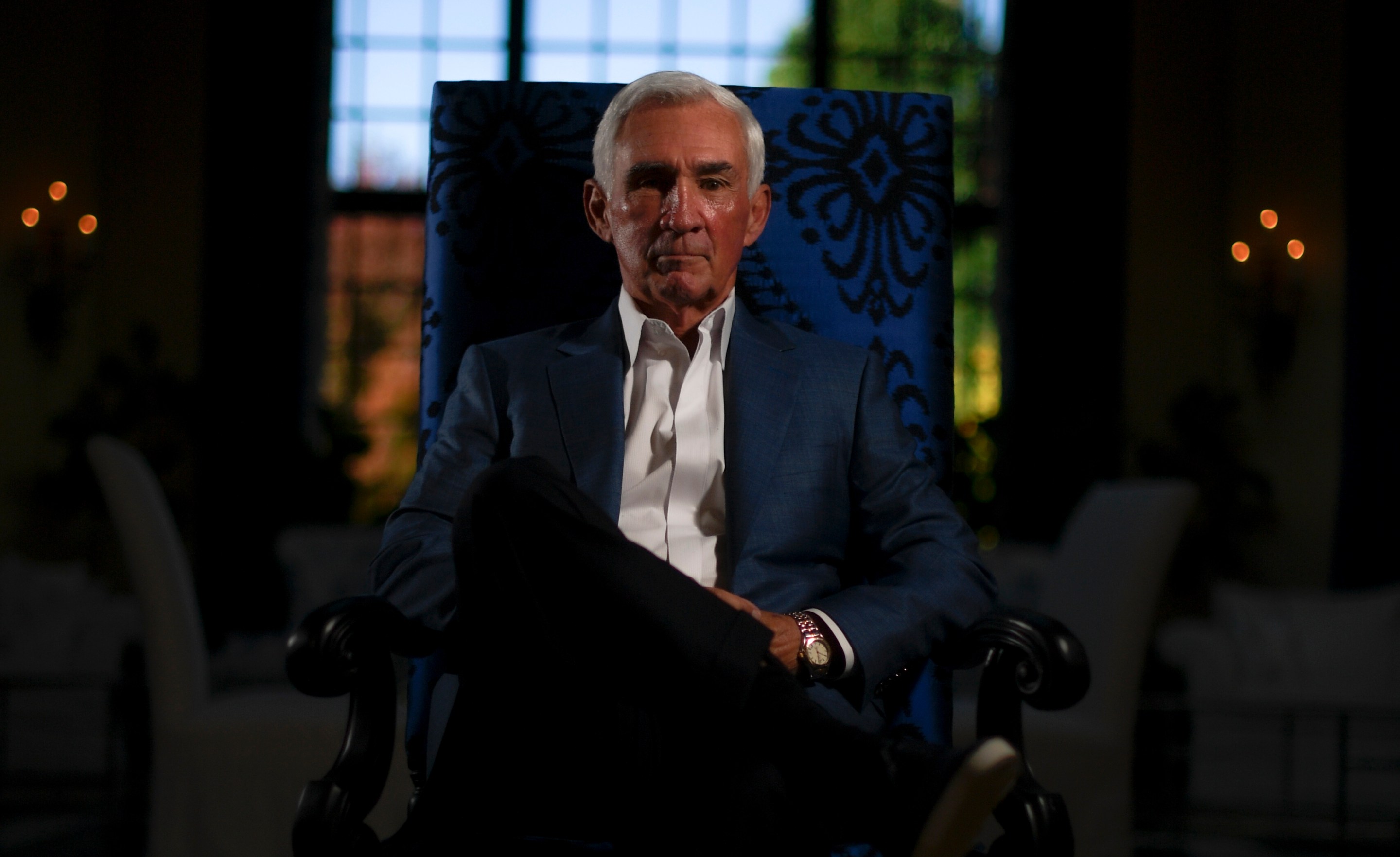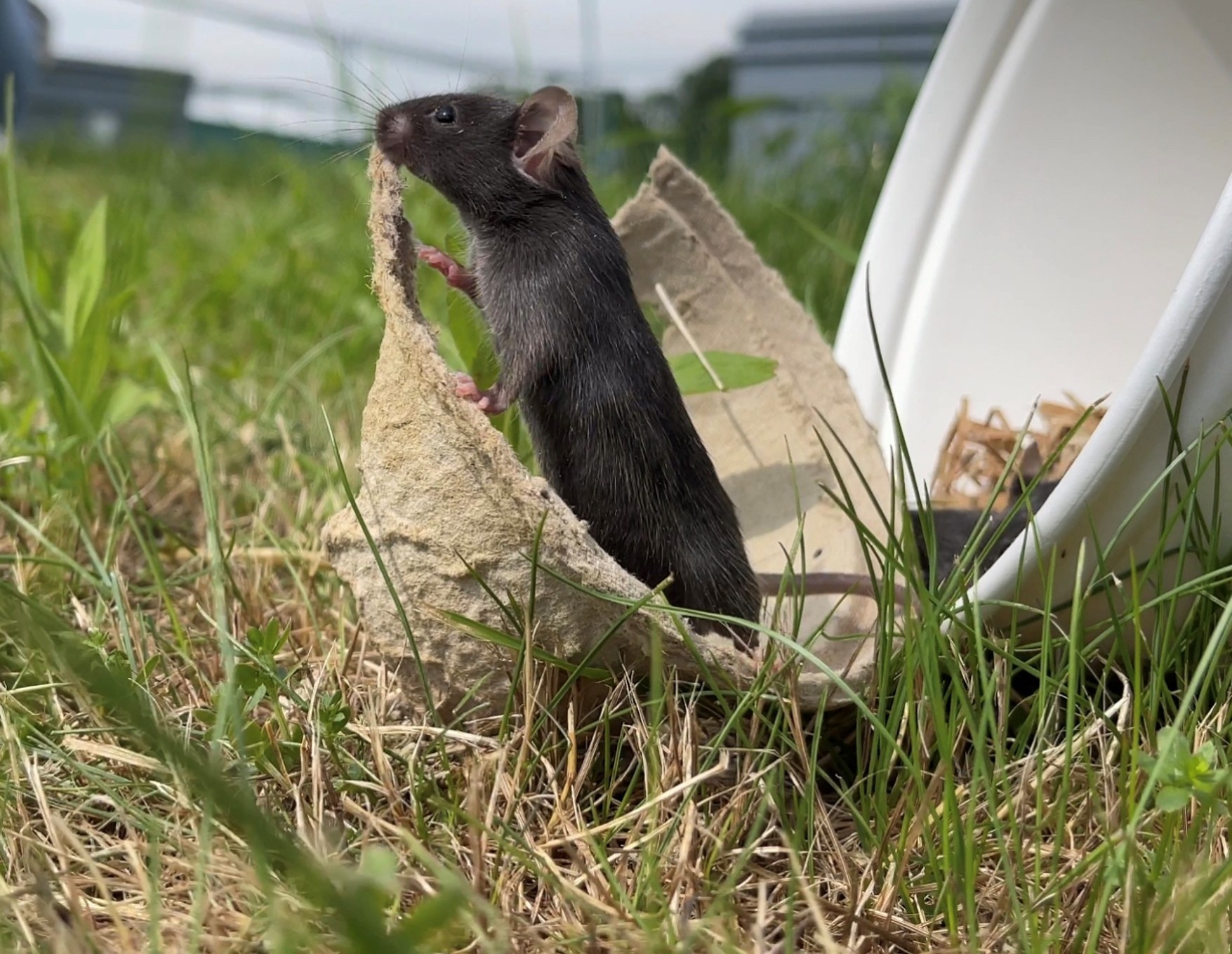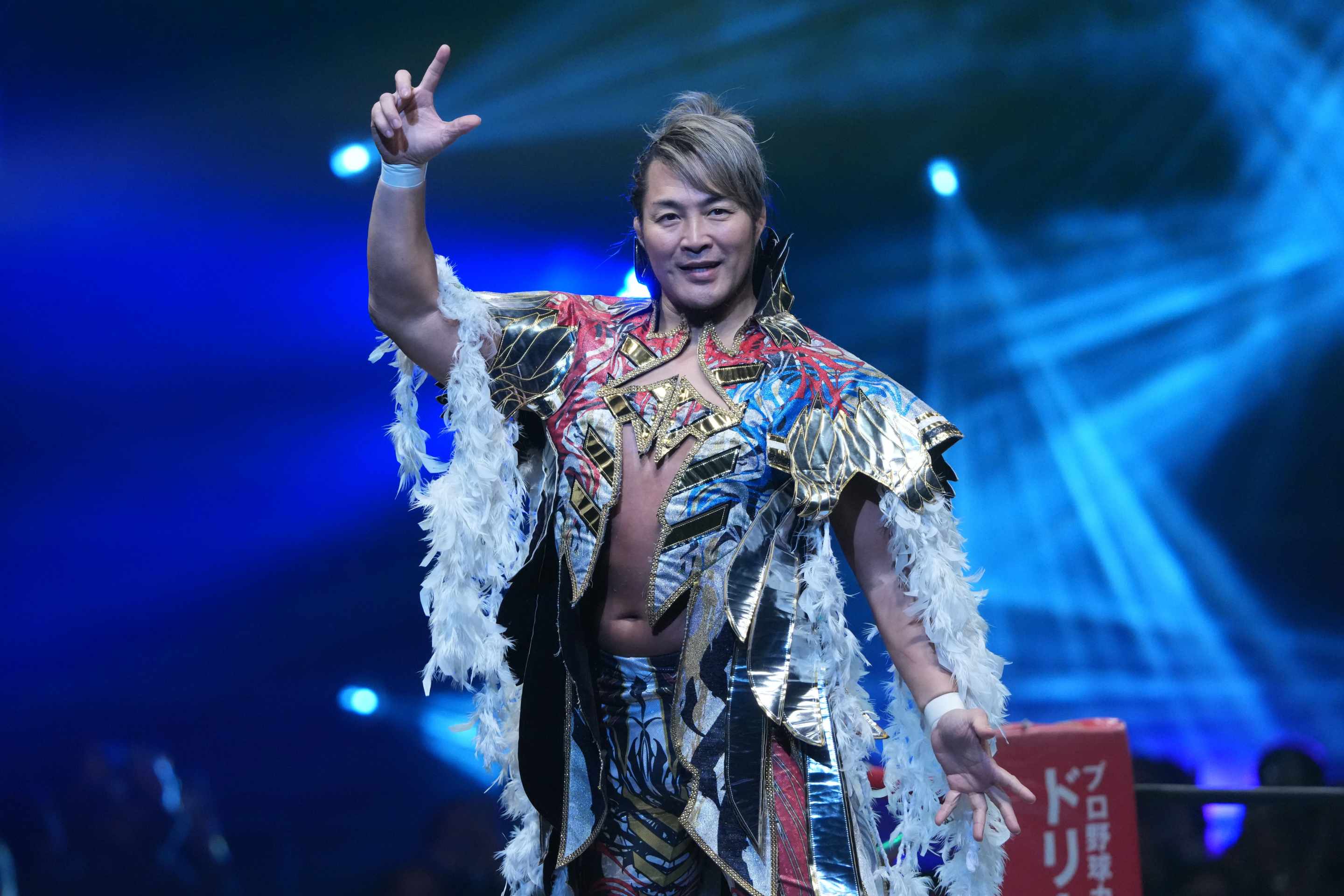I wouldn’t say Denver is a steak town. Green chile, sure. Weed? Absolutely. But steak, not so much. That’s not to say you can’t get a good one. Del Frisco’s has been the gold standard since I moved here two decades ago.
My rookie year as a wide receiver with the Denver Broncos, in 2003, the veterans took us to Del Frisco’s and made us pick up the check. I’m sure the filet was delicious that night, but it wasn’t the most memorable part of that meal. That’d be the bill: over $26,000.
Twenty years and many steaks later, the general consensus is that the best ribeye in Denver is about a mile away at a place called Shanahan’s—as in, Mike Shanahan. Winningest coach in Denver Broncos history. Back-to-back Super Bowl champion. Father of current San Francisco 49ers head coach Kyle Shanahan. Purveyor of fine slabs of beef.
It isn’t a surprise to anyone who knows Mike that his restaurant gets it right. I played for him for six years. We needed to do the little things the right way, he’d say, and if we did that the big things would take care of themselves. Big things like Super Bowls. Big things like crab cakes.
He hasn’t coached football in almost a decade, but the “Shanahan Offense” is used by some of the most potent offenses in the league, including four playoff teams led by guys who learned it directly from Mike: Matt LaFleur in Green Bay, Sean McVay in Los Angeles, Mike McDaniel in Miami, and Kyle Shanahan in San Francisco. It works. But what is it? I mean, what characterizes this self-evidently effective way of advancing a football?
Is it the West Coast offense?
The “wide zone” running game?
Do people even know what they mean when they say it?
Shoot, I played in it for six years and I’m not sure how to describe it. We ran all sorts of stuff. We had packages with five wide receivers, and we had packages with none. We did power runs, we did toss plays. We did inside zone, we did play action. We worked the sidelines, we worked the middle of the field. We ran three-step drops, we ran seven-step drops. We ran screen passes and we threw deep. We rolled right, we rolled left, we rolled right and threw back to the left. And if something was working, we’d run the same play four times in a row until they proved they could stop it.
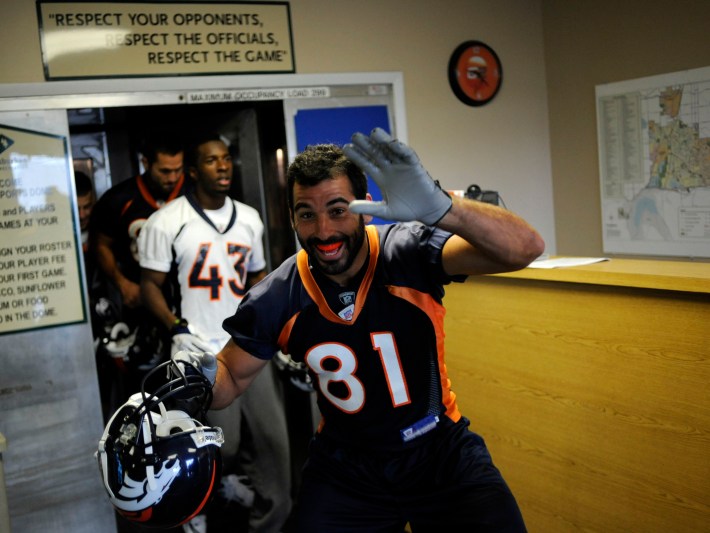
So what do people mean when they talk about the Shanahan Offense? I wanted an answer to this question. Thankfully I knew the man to ask: the guy who owned the steakhouse.
I texted Mike and asked, “What is the 'Shanahan Offense,' Coach? I hear the term a lot, but I don’t think anyone knows what it really means. If you’re willing, I’d love to get together and discuss.”
He was probably busy, though. He wouldn’t be able to—
“Sure,” he said. “We can meet at the restaurant.”
I’d seen Mike here before, at the restaurant’s grand opening in 2009. He’d been out of football for a year after being let go by the Broncos, and was about to take over as Washington's head coach. “I can still play, coach,” I told him that night when I finally got a moment with him. “I’m feeling great. Been training. I’m ready to go.”
“Really?” he asked graciously.
“Yep!” I insisted.
This was not accurate. I wasn’t “ready to go.” I was having an existential crisis. My hamstrings were barely attached to my pelvis. Football was over for me, I just didn’t know it yet. Mike did.
This time, Shanahan’s was empty as we took a seat in a back room. The waiter brought me a lemonade and Mike a Diet Coke as I made some idle chit-chat about Kyle and the 49er offense that was chewing up the league. He gave me a look as if to say, Let’s not get ahead of ourselves. You asked a question, and I’m going to answer it.
For Mike, this meant starting at the beginning, when he was a wishbone-running quarterback at Eastern Illinois. He suffered a career-ending injury in practice and went into coaching a few years earlier than he expected. But it was always his expectation.
And what do coaches do when they’re not coaching? They attend coaching conventions. While some go to schmooze, some go to drink with their buddies, and some go to campaign for a new job, a few, like Mike, take it seriously. The 1972 Coaching Convention at the Hyatt Regency in Rosemont, Ill., just outside of where he grew up, included some of the brightest minds in the sport, and Mike was eager to soak it up. There was one coach in particular who would take the stage that day and plant a vital seed. It was a young assistant coach for the Cincinnati Bengals named Bill Walsh.
Mike’s eyes lit up as he recounted for me Walsh’s speech, almost word for word, 52 years later. And my eyes lit up hearing it. Bill Walsh was the skipper of the 49ers team that made me fall in love with the sport. When I was coming out of Menlo College, Walsh, serving as a consultant for the 49ers, was instrumental in getting me signed to my childhood team. And when I was stuck down on the S.F. depth chart, he picked up the phone and called Mike Shanahan, orchestrating my trade to the Denver Broncos, where he thought I’d be a better fit.
Walsh took the stage that day in Rosemont and asked how many head coaches there were in the crowd. Some hands were raised. Then he asked how many were coordinators. Some more hands raised. How many were position coaches? Even more hands went up. Then he asked how many of the assistants wanted to be head coaches someday. Everyone raised their hands, including a 21-year-old Mike Shanahan. Then Bill said the thing that Mike didn’t know he was waiting to hear, and the thing that most football coaches don’t understand, or don’t have it in them to pursue—even though they say they want to be great.
“If you coach wide receivers,” Walsh said, “and you can’t coach offensive line, or you coach linebackers and you can’t coach running backs or quarterbacks. If you are an offensive coach and you can’t coach defense, or you are a defensive coach and you can’t coach offense, then you’ll be fired in five years. You have to know every position on the field.”
To be great, you have to know the whole machine, and most football coaches don’t. They get into coaching, find their lane, and never leave it. The sport is so complex, with so many moving parts, that you need a coach to coach each of the parts, and then you need one or two guys who understand the big picture, and that’s it, generally. Often, the head coach’s ego is so big and his job so tenuous that he feels threatened by assistant coaches who understand the whole machine. But Mike would learn later, only after years as a head coach, that the more coaches he had who understood or were hungry to understand the big picture, the better off everyone would be—smarter coaches equals smarter players. Smarter players equals better football teams.
Walsh also had some more advice for young coaches who wanted to get their foot in the door: “Go to a winning program, so you can see how it’s done.”
The journey of a coach is not for the weak: city to city, team to team; two years here, one year here, three years there. After two seasons in Oklahoma learning the Wishbone at the feet of Barry Switzer, Shanahan accepted a job coaching running backs at Northern Arizona. His wife, his college sweetheart, was with him every step of the way. The objective was clear—learn everything—no matter where it took you.
Northern Arizona appealed to Coach Shanahan because they were running the “Air Coryell” three-number system, popularized by Hall-of-Famer Don Coryell. This was a passing system based on timing and rhythm that used the tight end to run wideout-type routes, and put receivers in motion, which, because of rules that prevented defensive players from jamming them, gave receivers free releases. This stretched the field vertically and forced defenses to cover the whole field, which, if you called the plays right, could open things underneath and give you more opportunities in the run game, too.
The “three-number system” meant that each route in the route tree had a designated number—we often hear the term “9 route.” “9” is a “go” route. Go long! The three numbers—like 329—told the three receivers what routes they were running. This makes it easy for a pass catcher to know what to do: listen for your number and run that route. It doesn’t, however, teach the receiver to understand the big picture—to understand why he is running the route he is running. That’s up to the coach to explain it, or not.
One thing I learned about the Shanahan Offense when I played in it is how each route is tied to every other route on the play. There is a reason for my route. If I don’t take an outside release, the corner’s eyes will go inside and he will see the slot receiver coming into his zone and will decapitate him. That sort of thing. Nothing happens in a vacuum.
After one season at NAU, Mike’s alma mater, Eastern Illinois, came calling. After one year there as the OC and one national championship, Mike then accepted an OC job at Minnesota.
During this time, in 1979, the run-and-shoot offense was entering the marketplace, but no one was really running it well except for Mouse Davis at Portland State, so while at Minnesota, Mike took a trip to Oregon and spent three days at Portland State observing. The run-and-shoot used similar concepts to the Air Coryell, but often had four wide receivers on the field and those receivers would adjust their routes based on the coverage they were seeing, and the quarterback had to understand these adjustments as well. This required a great deal of practice—lots and lots of reps, and lots of watching film together to get on the same page. It is one thing for a quarterback to read coverage from the pocket, where he is stationary, but for a wide receiver, reading coverage while running a route is a different skill. Most people, when they decide to read a book, for example, don’t do so while sprinting. Your eyeballs are bouncing. You are straining your body. You are concentrating on your own movement. To also be deciding whether the corner is in man or cover 2, or deep third versus quarters coverage, requires a great deal of patience and practice, and that extra something special that connects a quarterback to his receiver—the shared mind that sees the same things and reacts accordingly.
Of course, every advantage must be gained, and during this time, the use of wide receiver motions was pioneered to give the offense crucial pre-snap reads. This, more than most other things in my mind, defines the Shanahan Offense. Shifting and motioning players before the play forces the defense to reveal whether they were in man or zone coverage, a vital component to understanding where to run the route and where the open man will be. If they are in man coverage, a defender will run with you as you motion. If they are in zone, he’ll stay put. Those three days at Portland State were very productive. Shanahan came back to Minnesota and began to implement the concepts in his own offense.
In Minnesota, the Shanahans had a son, and they named him Kyle. Soon after, the three of them hit the road again, this time to Florida. After a successful stint there, Mike was finally ready for the NFL.
Or was he? As it turned out, Mike still had a pretty big blind spot, one you never really discover until you come in second place.
When Mike arrived in Denver in 1984 and met Broncos defensive coordinator Joe Collier, he was blown away by Collier’s expertise and the ease with which he described any and every football concept under the sun. Collier was someone who embodied the spirit of Bill Walsh’s directive to “know everything.” But not every coach on the staff was like that. In fact, most weren’t, which made Mike realize that there was an opportunity for a guy like him.
After a 13-3 campaign that year, coach Dan Reeves, who wasn’t an Xs and Os guy, promoted Mike to OC. The next year they went 11-5 and missed the playoffs—at the time the only team to ever win 11 games and miss the postseason. But the next two years the Broncos were the best team in the AFC and earned back-to-back trips to the Super Bowl. And both times, they got their asses kicked. Why? What was missing?
In the offseason after those Super Bowl losses, Mike was asked to speak at clinics, and when he was preparing cut-ups of his offensive film to accompany his talk, he said to himself, “My offense is shit! I don’t have anything good here! It’s just No. 7 [John Elway] making a bunch of plays.”
In the first of the two Super Bowl losses, 39-20 to the New York Giants, the Broncos had thrown for 320 yards. Pretty good! But they rushed for only 52. Pretty bad. Conversely, the Giants threw for 263, rushed for 136, and won the time-of-possession battle by almost 10 minutes.
Hmmmmm.
Next season, the Broncos lost the Super Bowl, 42-10, to Washington. The Broncos threw for 230 yards and rushed for 97. Washington threw for 322 and rushed for 280, a Super Bowl record, and controlled the time of possession again by 10 minutes. Yes, the Broncos were having success in the regular season. Yes, they had the best QB on the planet. It wasn’t enough.
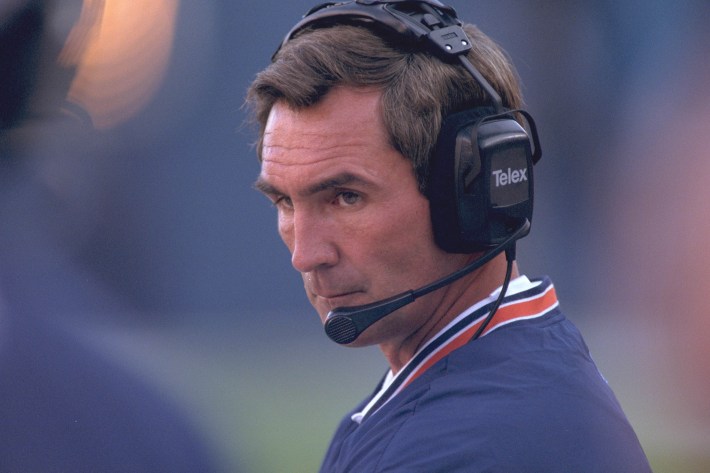
How do you win the big one? You dictate the terms. Establish control, and keep your defense fresh, so they can attack. Ten minutes more of ball possession means 10 fewer minutes that your defense is on the field. They feel good while the opposition wears down.
And how do you keep your defense off the field? Run the football, something the Broncos offense hadn’t done particularly well.
Mike was already seen throughout the league as a hot head coaching candidate, and, like so few of those assistants 15 years earlier who raised their hands when Bill Walsh asked who wanted to be a head coach, he was about to get his chance.
Growing up as a kid in the Bay Area, as I did, you were either a 49ers fan or a Raiders fan. The Niners were the wine-and-cheese crowd and the Raiders were the bad boys who would fuck you up. The renegades. The assholes who wore black. And the man steering the pirate ship was owner Al Davis. Davis is a legend for his contributions to the NFL—some good, some bad, but Davis was not just an asshole; he was a winner.
Davis went 10-4 as head coach in 1963, 5-7-2 in 1964, and then the Raiders wouldn’t have another losing season until 1981. His first year as a GM, they went 13-1 and lost the Super Bowl. They would go on to make the playoffs in nine of the next 10 seasons and between 1976 and 1983, they won three Super Bowls, one with John Madden and two with Tom Flores. But in 1986 and ‘87, Flores missed the playoffs, and Al decided to make a change. He set his sights on the up-and-comer, offensive coordinator of the back-to-back Super Bowl runner-ups, Mike Shanahan.
“Everyone told me not to do it," Mike told me with a smile, recounting his short time as a Raider. “I got there and realized immediately everything was different.”
Al Davis, Mike quickly learned, did things his own way, and when Mike wanted to explore the cutting edge of offensive football, Davis bristled. For anyone used to modern football, shotgun formation doesn’t seem like anything fancy, but there was a time when it was new on the scene, and no matter how effective it might have been, Davis wouldn’t let Mike run it.
Al also moderated the offensive line protections that Mike was running. During the Madden and Flores years, protections relied on an archaic system of man-to-man, keeping a running back and a tight end in to help the offensive line when they were threatened. But Mike had identified a new protection (2 Jet) that slid the offensive line to the defense’s strong side, which gained a blocker on offense and allowed the tight end to run a route or a running back to exit the backfield and become a receiver.
John Madden, by then working in the media and still with a good relationship with Al, thought this was crazy. “What is this? I’ve never seen this before!” Madden said to Shanny. “How do you release a back? What is a hot route?”
Madden had never studied this stuff so he didn’t know it yet, and he admonished Mike for trying something so out-there. Years later, Madden would apologize to Mike. Some coaches, despite their successes, were stuck on what had worked for them, and never explored what was working for others. Now we hear the NFL called a “copycat league” because everyone steals everyone else’s shit, but that wasn’t always the case.
It wasn’t just formational stuff that Davis wanted control of. He chose the players. He chose the coaches. And he chose which players played. Marcus Allen was the team’s lead back, but after a falling-out with Davis, Mike was instructed not to play Allen and instead make Bo Jackson the lead back. “You don’t understand," Mike said. “Marcus has to be in there because Bo doesn’t know the plays. He has to be able to ask Marcus what to do!”

Because of Al’s particularities, Mike was only able to bring a few of his own coaches onto his staff. One of them was “wide zone” blocking run guru Alex Gibbs, whose expertise would be a building block of the running game that thrives in the modern NFL, and a staple of the Shanahan Offense. The old way was the “gap scheme,” in which the run is designed to attack a certain “gap”—The A, B, or C gap, for example. A is between the center and guard. B is between the guard and tackle. C is between the tackle and tight end. Every blocker’s job is to keep their defender out of the gap.
The wide zone is a whole different animal. It wasn’t something I paid much attention to as a wide receiver. (As a wideout, your run blocking rules are pretty simple. When you are split out wide, you either block the corner or the safety, based on the play and coverage.) Down in the trenches, which I learned when I transitioned to tight end in my third season, the identifying characteristic of the wide zone is that you are blocking an area, not a specific man, and it requires communication to make it effective. We are blocking them, but I don’t know which of them I’ll end up blocking, and won’t know until the play develops. The running back must read this development and pick the hole that reveals itself; often there are more than one to choose from.
The key is the use of synchronized lateral movement by the entire offensive line at the snap of the ball, which gets the defense moving laterally, too. Then we block whatever bodies are in front of us as we move, often double-teaming the man in front of us until one of us has control of him, then the other guy “climbs” to the next level to block the next threat—first through defensive linemen, then linebackers, then defensive backs, always keeping your hips square to the sidelines. This creates multiple holes for deft running backs to exploit, including large cutback lanes behind over-pursuing defenders.
This lateral movement off the snap also creates unique opportunities for play-action passes, or “keepers,” that exploit over-pursuing defensive players who have found themselves wildly out of position. When working in concert, the run setting up the pass, the pass setting up the run, the wide zone running game is line after line of gorgeous gridiron poetry.
But it doesn’t matter how innovative or effective your scheme is if no one is on the same page, and the Raiders coaching staff, aside from Mike’s assistants, were hand-picked by Al, including Art Shell, who ran the defense. One day Mike went into a defensive meeting room and a coach was sleeping in the back while the players were fucking around and throwing shit at each other.
“What is this?” Mike asked, pointing to the slumbering slacker.
“Oh he gets tired sometimes, Coach,” one player replied. “So we just let him take a little nap.”
It was a marriage made in hell, and ended as such. After starting the next season 1-3, Mike was fired. You live, you learn.
After Shanahan was let go by the Raiders in 1989, the Broncos picked him back up as an assistant mid-season, and returned once again to the Super Bowl, where they suffered an even worse defeat at the hands of the 49ers, 55-10. I remember the game well because everyone on my street was a 49ers fan—well, everyone except Zack, who lived two doors down and bled orange and blue. It was a bad day for Zack, but those were good days for the Niners. This was the first year of football without Bill Walsh at the helm, but he had passed the keys to his protégé George Seifert. Just press play—and the machine hummed along.
And three years later, after finding himself in the middle of a feud between John Elway and Dan Reeves, Shanahan was onto his next role: offensive coordinator for my San Francisco 49ers.
His first day on the job, before any of the other coaches had arrived, he sat in on an organizational meeting with 100 people in the room, where everyone’s job was laid out in detail. Each department head broke down what they did and how they did it, and it was articulated that if you weren’t among the best at what you did, you would not be there very long. No matter what it was you did—marketing, grounds crew, trainers, sales, food service—everyone. It wasn’t just about holding the players to a certain standard, it was about holding everyone in the organization to that exact same standard.
Prior to Mike’s arrival in 1992 the Niners had won four Super Bowls in nine years. How did they do it? For the fan, it was pretty easy to identify—Joe Montana and Jerry Rice. Great. That’s exactly what Bill Walsh wanted us to think, because the truth was the opposite. The 49ers were winning the same way the Broncos had lost their Super Bowls: dominating the run game, controlling possession, exhausting opposing defenses.
But there’s more to it, isn’t there? There is more than your system. There is the human element. And Mike was getting a crash course in that part, too, with some of the best athletes and biggest egos on the planet.
Mike is one of only a handful of coaches to coach three Hall of Fame quarterbacks. Two of them were on the same 49ers team that Mike took over play-calling duties for in 1992: the still relatively unproven Steve Young, and the beloved Joe Montana. Joe was the type of legend that is impossible to truly replace, but it became clear after he got hurt and Steve took over and played well, that the team was going to look toward its future and do the unthinkable. The NFL is a dirty business, something I learned long before I ever put on a uniform. I was in middle school when I found out that the 49ers had traded Montana, my hero, to the Kansas City Chiefs for, well, it didn’t matter who or what for. You traded god.
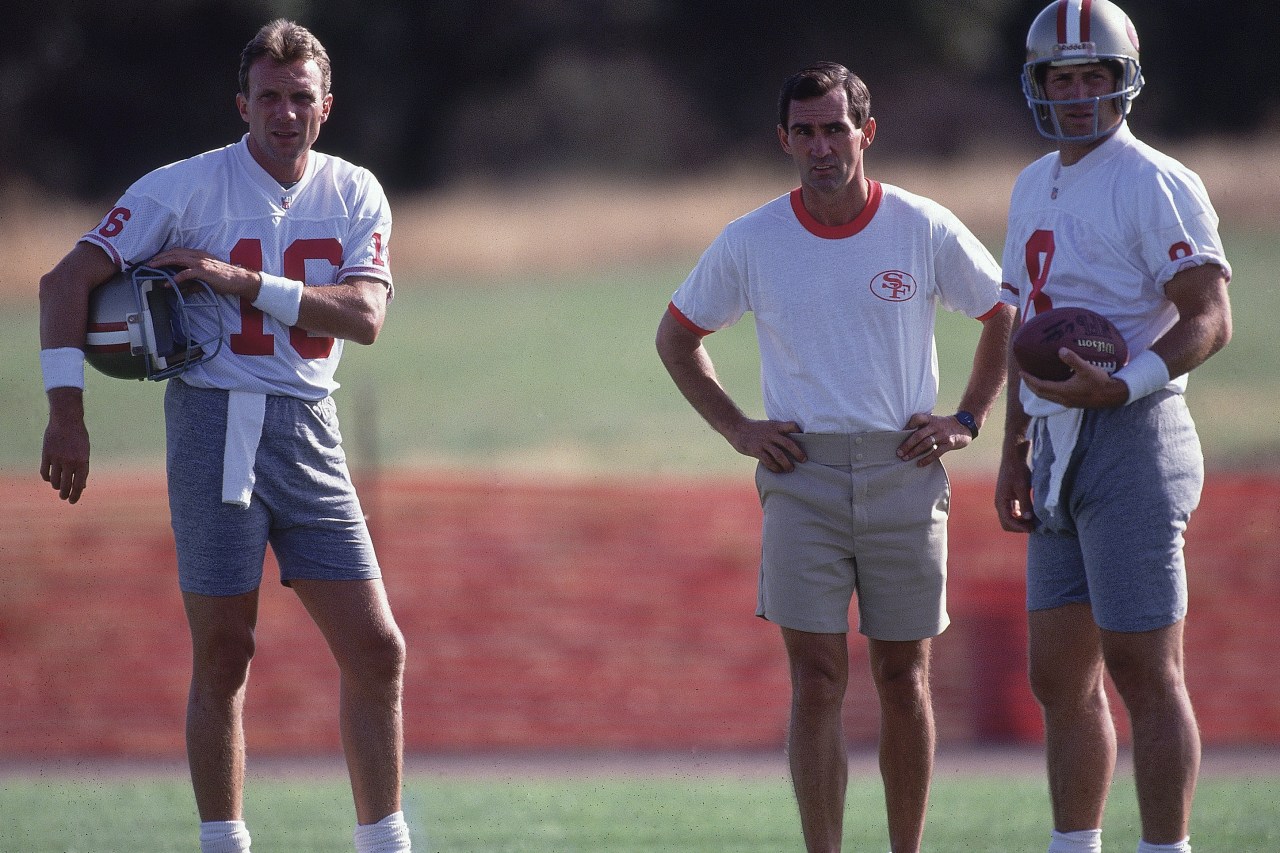
When I asked Shanahan about it, he made it clear it wasn’t just us kids on Heppner Lane who saw Montana as a deity—he was viewed that way in the locker room as well. They loved Joe. He was “one of the guys,” a term that gets thrown around a lot, but the value of having your best player also be one of the guys is hard to quantify. You just thank your lucky stars when that turns out to be true, because it often isn’t.
When Joe left and Steve Young took over, Steve’s teammates were having a hard time with it. They weren’t comfortable around him yet, so they didn’t show him love. He wasn’t one of the guys. Steve came to Mike and said, “I don’t get it, Coach. I can’t get close to these guys.”
“Well,” Mike said, “you have to get to know them. Go out with them. Have some fun with them. Let them get to know you and see you outside of the locker room.”
“But I don’t drink, Coach. And I have a girlfriend.”
“You don’t have to drink, Steve. Just go out with them and hang out while they drink. Shit, you can be their designated driver!”
So Steve took Mike’s advice and went out with the fellas. Steve was the awkward sober guy at the bar while his buddies let off some steam, but sure enough, as the nights would wear on, there was Steve, having fun, laughing, listening to the drunken ramblings of his teammates, being a shoulder for them to lean on, and then delivering them home safe and sound. I can’t imagine that was easy for Steve, but he did it for the sake of the team, and he was rewarded with their trust. Football, in the end, is about trust. More often than you might think, these truths aren’t established on the field.
Back in Denver, things had come to a head with Elway and Reeves, and owner Pat Bowlen decided to part ways with Reeves, a coach who had led them to three Super Bowls but couldn’t get over the hump. And Pat knew who he wanted as his replacement. He called Mike and offered him the job. Mike turned it down.
Why? I asked him. Well, Pat wouldn’t commit to doing what it took to win. That meant, among other things, spending the money it took to compete with the best and wealthiest teams in the league. There was no salary floor back then, so teams didn’t have to spend money if they didn’t have it, or if they didn’t want to.
So Mike declined the Broncos’ head coaching job and stayed in San Francisco, where over the next two seasons he cemented himself as the brightest offensive mind in the sport.
During his three years with the Niners, they were the No. 1 scoring offense in the league each year, and always either first or second in yards. The most dynamic element of their offense, for the first time in Mike’s career as an OC, was the ground game. They were first or second in rushing scoring every year. They controlled the pace of the game and kept their defense fresh. Steve Young won All-Pro honors three years straight and finished off 1994 with a Super Bowl MVP.
The Niners beat the Chargers 49-26 in that Super Bowl, applying the lessons of his previous Super Bowl losses and controlling the game when and where it mattered most. San Francisco had 32 carries for 139 yards and one score, and Steve Young went 25-for-38 for 331 and six touchdowns, still a Super Bowl record. The Chargers managed only 19 carries for 67 yards, while quarterback Stan Humphries went 27-for-55 and 301, with one touchdown and three INTs. The Niners won the turnover battle 3-0 and allowed their defense to feast that day, forcing six sacks and three takeaways.
As Steve Young got the monkey off his back, so too did Mike Shanahan, finally winning the big one. In the days that followed, Pat Bowlen called again with the same job offer, only now he was ready to do it Mike’s way. The rest, as they say, is history.
It’s hard to think about football without remembering what it meant to you as a kid and the moment you became a fan, or, in my case, a disciple. I was 9 years old on Jan. 22, 1989, and lying on the shaggy green carpet of my living room, a pillow behind my head, a bowl of Cheetos on my stomach, watching Super Bowl 23. There was 3:04 left in the game and my 49ers trailed the Cincinnati Bengals, 16-13. The posters were on my wall. The hats, the shirts, the jerseys, the plastic Huff helmet—I had them all. Every chance I got, I was out in the street playing two-hand touch. My elementary teachers knew what I wanted to be when I grew up, and it wasn’t an astronaut.
But when Joe Montana stepped into the huddle that day at Joe Robbie Stadium, 92 yards separating his team from victory, something happened to me. I felt myself transformed, pulled into the action as if it were me on that field, and it was my life on the line. I understood the stakes, and I knew what it would take to finish the job. And when the 49ers did, indeed, finish the job on a 10-yard strike from Joe Montana to John Taylor in the end zone, I felt the grass under my feet and I smelled the sweat and heard the crowd roaring as I embraced my teammates in ecstasy.
I jumped up off the carpet, spilling Cheetos all over the room, and ran through the house, arms raised in triumph. All the while, my father was seated on the couch behind me, one eye on the game, one eye on the book in his lap.
Fourteen years later, I would walk into the 49ers facility in Santa Clara to sign a free-agent contract. The space between these two events has closed in my mind. Now, 15 years removed from my last season in the NFL, I see the journey as a series of moments.
My arrival in that 49ers locker room was, perhaps, less likely than going to space would have been. I didn’t play Pop Warner. Swimming was the sport that sharpened my competitive spirit. I learned to rely on myself, to believe I was going to win, and to completely empty my mind and wait for the BANG of the starter’s pistol. As soon as I touched the other side, there was my dad with a towel and a video camera in my face, asking me my time.
When I wasn’t swimming, I was playing soccer for the South San Jose Lions. Weekly games and tournaments all over California. Wherever it was, my dad took me there, no matter the conditions. Either in his light blue Volkswagen Rabbit or our red Toyota van—through fog so thick we couldn’t see the front of the car—we’d be there on time, with the proper equipment, well-fed and ready to compete. Something I never saw my dad do? Yell at the refs, or get in an argument with opposing parents, or lobby the coach for a more prominent role on the team for me. He just showed up and stood behind me. His dreams were his dreams, and mine were mine.
At night I dreamt of a different sport. My parents weren’t keen on the violence, though, so they made a rule: I had to wait until high school to play football. I think they hoped I’d forget about it.
When freshman year came around, I signed up. I hadn’t hit puberty and I had never put on a helmet and shoulder pads before, and there I was practicing against sophomores with mustaches who had been playing tackle football since they were kids. I got my ass kicked every practice then rode the bench every gameday. After the game, there was my dad, to put his arm around me and take me to get something to eat. All along my football journey, there was my dad, up in the stands, one eye on the game, one through the viewfinder, recording it all so I could watch it later.
He was there when I switched to quarterback my sophomore year and rode the bench that year, too. He was there when I moved to wide receiver for the last game of the year. He had the camera on me when I caught a five-yard hitch that I turned into a 10-yard gain.
He was there the next two years when I came into my own as a wide receiver and safety, and despite all-league honors and a solid performance in the local all-star game, received zero interest from college programs.
He was there when I decided to walk on at Cal Poly after speaking with their head coach and getting a good feeling about him. When my dad and I showed up at their spring game to see that coach, we found out that he had just taken a job in the NFL. We introduced ourselves to the new coach and my dad was standing next to me when that coach said that there wasn’t room on the team for walk-ons, but to try again next year.
He was there for the next spring game, having gone through the entire winter and spring programs, pushed into the corner with the rest of the would-bes, where we all stood around, getting no reps, no coaching, beginning to see the writing on the wall. I was moved to tight end with one week left in spring ball, and when the spring game came, there was my dad up in the stands, underneath an umbrella, camera on his shoulder. I stood on the sideline, soaked to the core, for the entire game, until the last drive, when I got in for three running plays. He was there when I cried in his arms on the 50-yard line, and when I called a few days later to let him know I had been cut.
He was there the next year when I decided to transfer to Division III Menlo College in order to keep playing the game I now loved. He was there when I led the team in receiving my first year, and when I led the nation in receiving the next two. He was there the day I scored three touchdowns and my coach told me after the game that Bill Walsh wanted to talk to me. I dropped my helmet and jogged over to meet my first coaching hero, who told me to keep doing what I was doing, and that I’d get my chance to make an NFL team.
My dad was there when I got that chance, and when I got cut and had to move back home. He was there when the Niners signed me back after the season, and saw me off when I was traded to the Broncos. He was there when I got sent to NFL Europe to play for the Rhein Fire.
He was there four years later when I finally scored my first regular-season touchdown. He had been there the night before the game when I showed him the play in the playbook that we would run if we got down on the goal line; a play in which I was the primary receiver. And he was there when it played out exactly as planned, in the end zone directly in front of their seats. I caught the one-yard score and pointed up to the stands where he was sitting—both his eyes on the game this time.
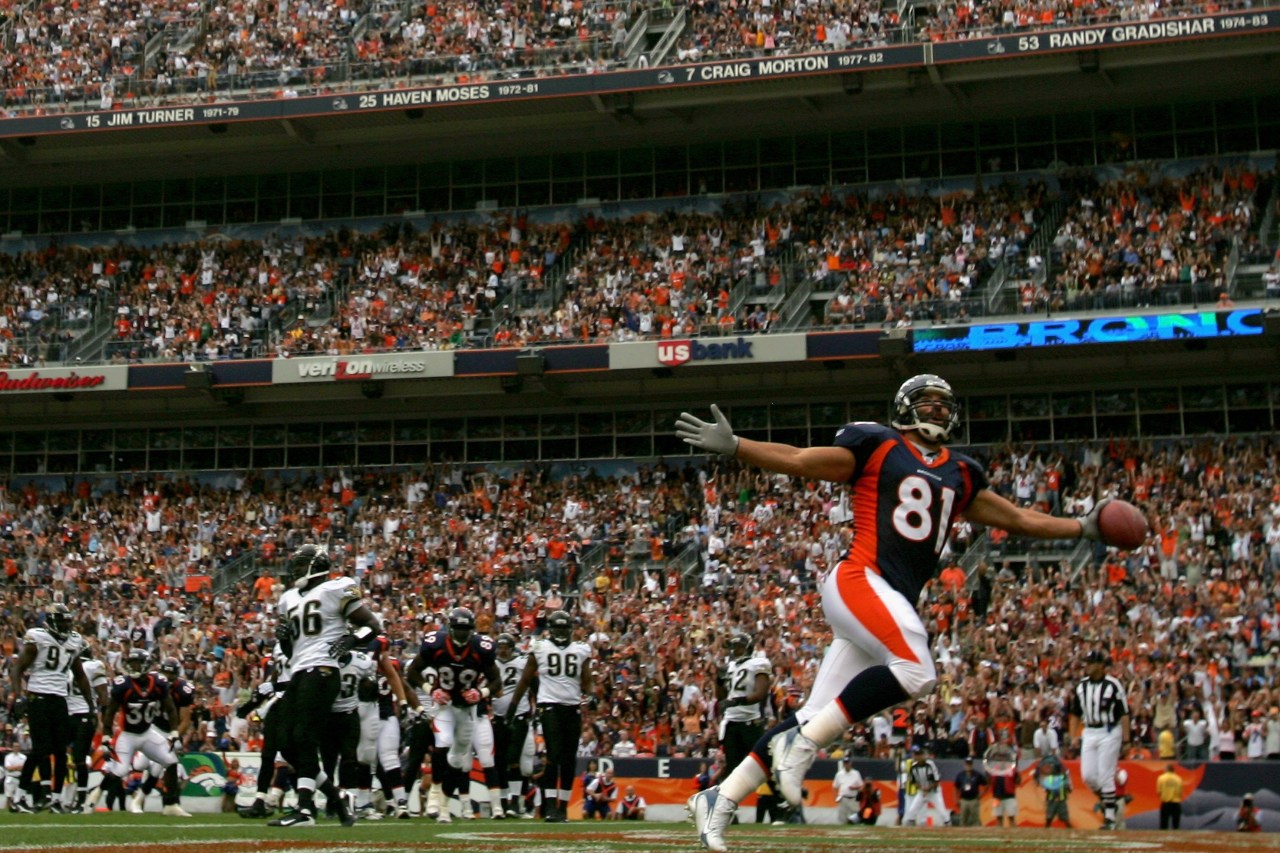
And when my career came to an end a few years later, he was there to help me understand that I was more than a football player, and that now the real work of life began.
My dad was not a football man—his heroes were poets and statesmen. But in the 15 years that have followed my NFL career, I’ve sat in the same room and watched more NFL games than I can count, my dad sitting next to me in his big brown chair (they’d long ago replaced the green carpet), still watching out of one eye—this time because the other didn’t work anymore.
This football season marks a new milestone. It’s the first one without my dad. He died in May at the age of 94. You never know how it will feel to lose your father until you do—until you walk down the hall and into the living room, and his chair is empty.
Life moves along; my own son just turned 4. For the last three years, I had a job in Denver sports radio. Every few days, I’d get a text from my dad, commenting on one of our segments or complimenting me on my usage of a certain word. But then one day in September, I got fired. “We’re going in another direction,” I was told, and this time, my dad wasn’t around to see me through it.
And so here I am, jobless and fatherless, trying to make sense of who I am, where I’ve been, and where I’m going. Who’s there for me.
A few days before my firing, the Denver Broncos had an alumni event. Word had gotten out at work that changes were afoot and I had a feeling I was about to get canned. I didn’t want to go to the event, but I did. I’d met my wife after my NFL career was over, and she doesn’t know that Nate. She doesn’t know the football player. I wanted to show him to her.
I saw a lot of old faces. Old friends. Lots of laughs and hugs and an ease that I don’t find anymore. When Mike Shanahan took the podium and spoke about his time with the Broncos—our time—we all got quiet. Like magic, there we were again, seated in front of our head coach in those rolling leather chairs in the team meeting room, preparing to tackle the day. As I listened, I couldn’t help but think of my dad, and how proud he was of what I had become under Mike.
After his speech, I shared a few words with my old coach. He asked how I was. I told him I thought I was about to get fired. He told me if I ever wanted to get together and talk ball, to call him.
